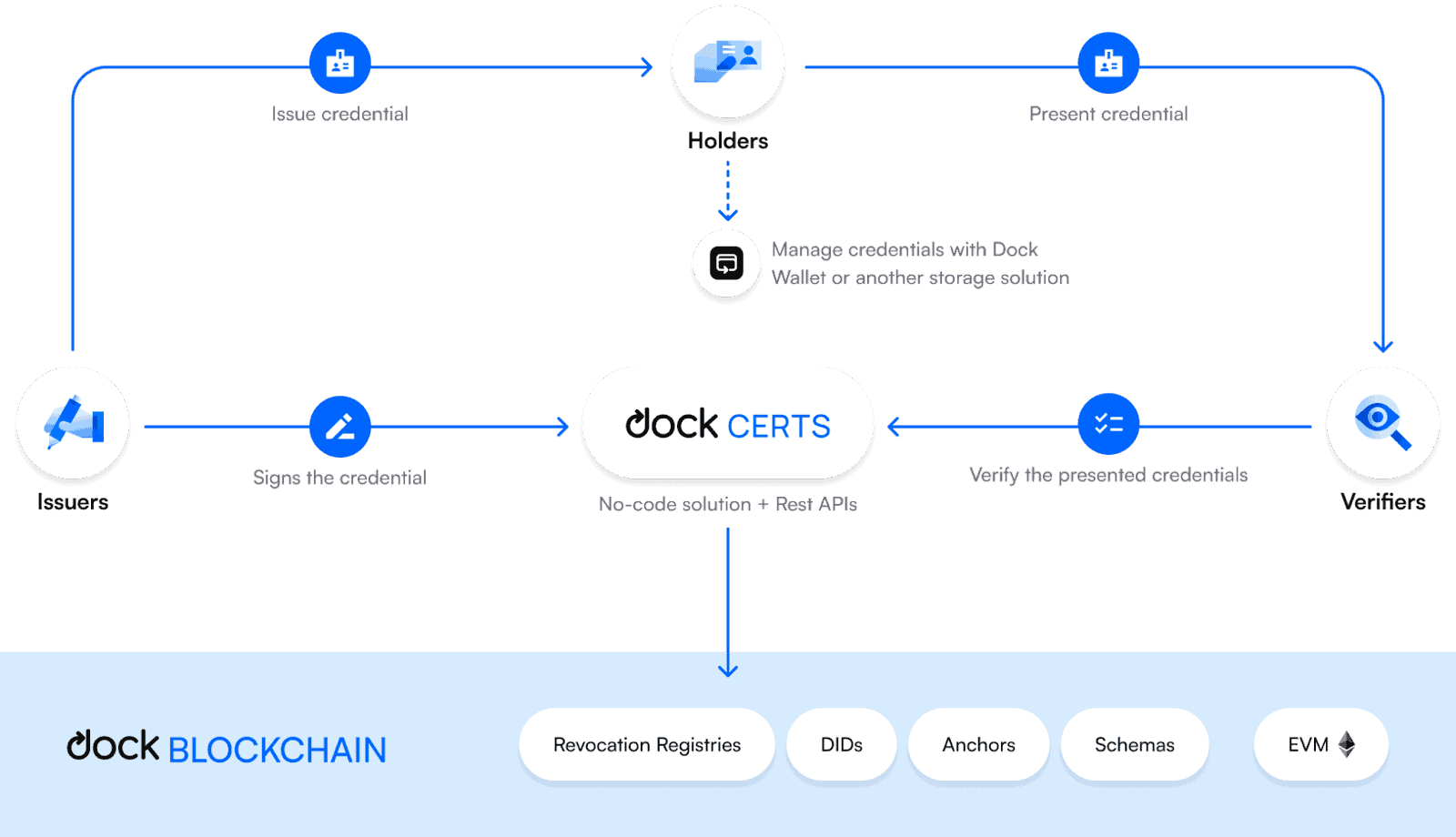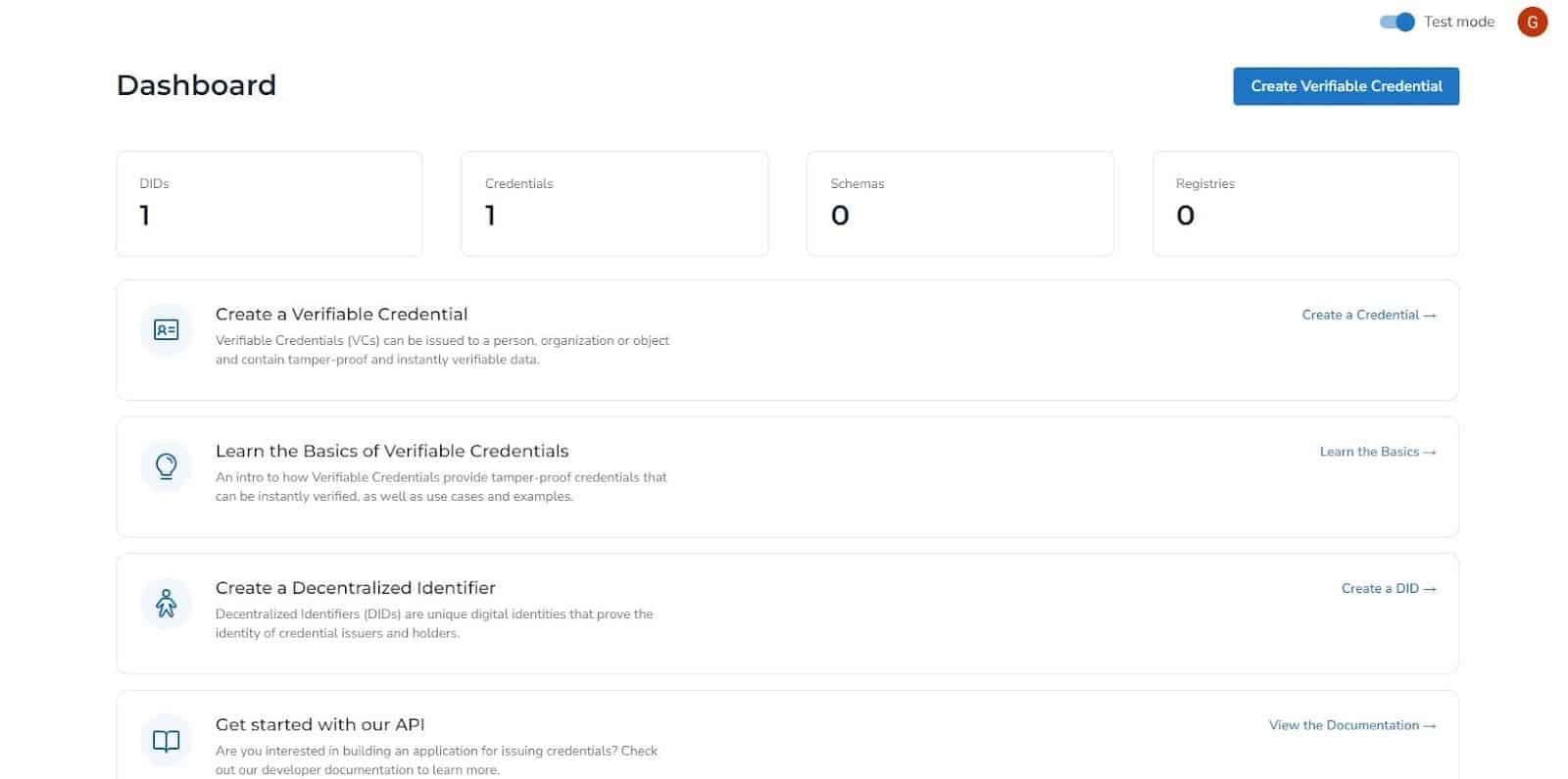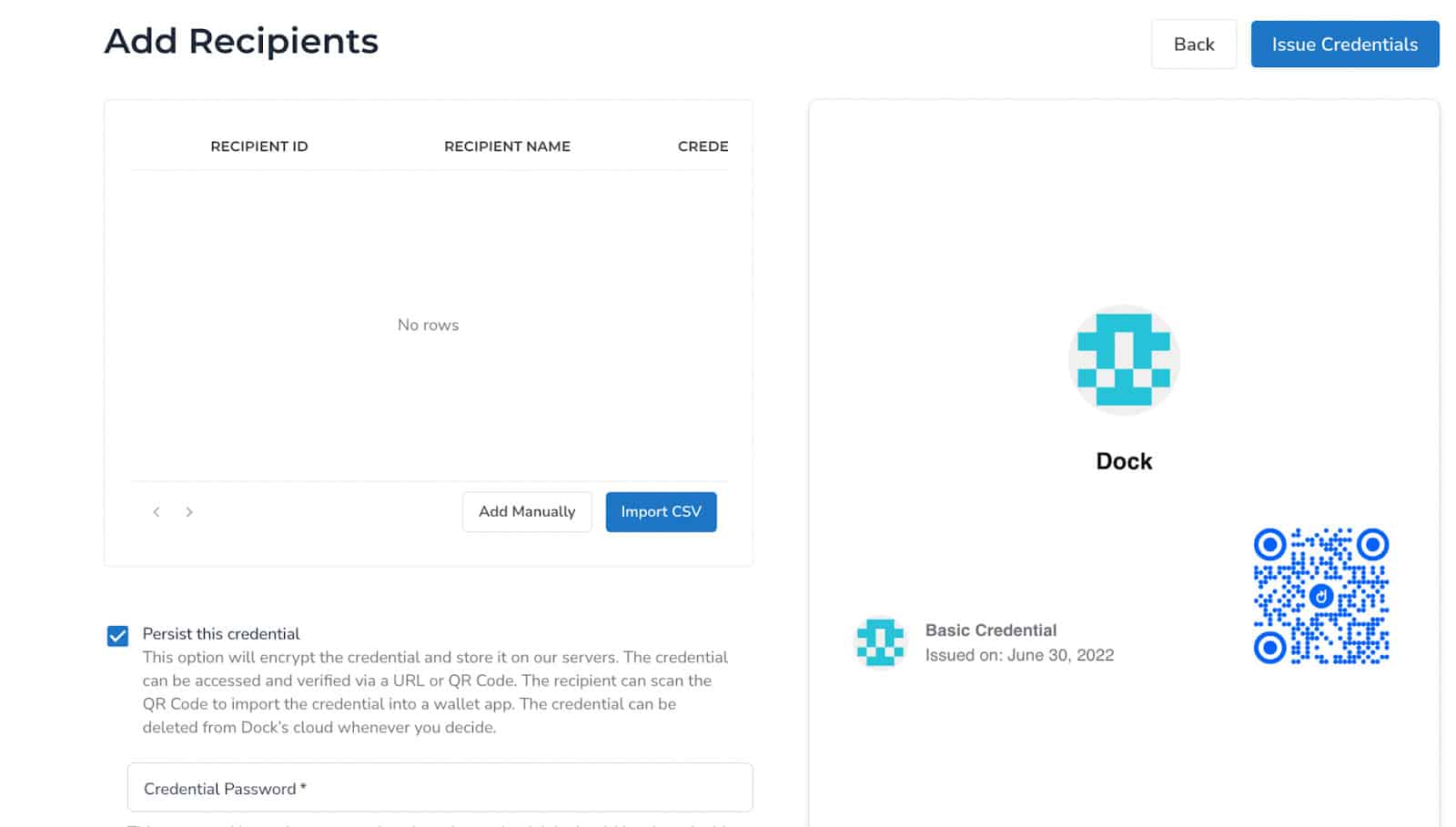Dock Network: The Complete Guide
Dock brings forward an ecosystem consisting of a wide variety of tools that use blockchain technology to enable businesses and developers to create and manage verifiable credentials and decentralized identifiers.
There’s a lot to unpack in this statement alone. Below is a comprehensive guide about Dock Network and everything there is to know about it.
Problems Existing With Current Credential Systems
The advance of technology in the digital space has undoubtedly had a massive impact on the way users interact not only with each other but also with businesses. The process of global digitalization was further accelerated during the COVID-19 pandemic as people were forced into lockdowns, left with no means to interact with businesses but remotely.
Users are required to interact with thousands of businesses digitally – spanning from food deliveries, various online subscriptions, services, and whatnot.
Beyond simple services, however, users also got used to accessing complex financial services online as well. All of these have one thing in common – they require some sort of proof of identity.
Providing proof of identity in a digital environment, as it is right now, requires a slow and tedious verification process which also increases the risks commonly associated with data breaches and fraudulent credentials.
To sum up, some of the issues that are associated with paper-based credentials (like sending a copy of your ID to a service provider, for example) include but are not limited to:
- They’re not very easy to update
- They’re not future-proof
- They can be easily faked
- There’s no automation
- They can be lost or damaged easily
- It’s complicated and inefficient to share them
All credentials are issued using identifiers, and in today’s world, centralized identifiers. We all know centralized identity systems are problematic. They have always been vulnerable to threats, cyberattacks, and privacy breaches with a single point of failure. The large companies own all the information on our behalf, and this has led to a revolution against centralized control to make the web decentralized. Web3, the decentralized internet built on the foundation of blockchain and cryptography, has the potential to make this data secure, self-owned, and trustworthy.
At this rate, it becomes obvious that as the world goes digital and decentralized, decentralized identity solutions become mandatory.
This is where the Dock Network comes into the picture.
How Does Dock Solve These Problems?
Dock brings forward solutions that allow users to make any document tamper-proof through the usage of verifiable credentials (VC) tools that are built for organizations to issue digital credentials and certificates. Leveraging blockchain-based technology makes the process automatically and instantly verifiable, auditable, and fraud-proof.
Verifiable Credentials are documents that contain a cryptographic signature. Think of it as a permanent stamp that enables anyone to confirm you issued that particular credential. Any document can be a verifiable credential – a license, a certificate, an identification card, a or scorecard. They are fraud-proof and verifiable with the click of a button. These credentials can be issued by an organization or an individual.
To issue or verify a verifiable credential, you need a decentralized identifier (DID) that is created on the blockchain. This is the same DID via which Web3 promises to bring the data back in control of the users. The Dock blockchain maintains a registry of all the DIDs issued using it. This creates instant trust between organizations and people in the ever-growing digital economy. All the data and its footprint that is produced using a DID is in complete control of the user who owns the private key. The user can share only specific information that is required at a particular time, keeping all the rest of the information private.
Let’s dive a bit deeper.
How do Verifiable Credentials Work on the Dock Blockchain?
Making the entire process possible are the participants in the Dock ecosystem, the entirety of which is powered by blockchain-based technology.
These entities include:
- Identity Owners
- Issuers
- Holders
- Verifiers
- Validators
- Governing Council
- Revocation Authorities
Before we jump into each of these separately, it’s important to note that the entire concept is made possible because of the introduction of decentralized identifiers (DIDs). Without getting too technical, these are new types of identifiers that allow for the creation of verifiable and decentralized digital identities. A DID is any subject (e.g., an organization, person, or even an abstract entity) as determined by the controller of the DID – its owner or holder.
With that said, let’s begin to unpack the above.
Identity Owners
These are the entities that have an on-chain decentralized identity (DID). It has an associated public, and private key that can be used to authenticate the identity or verify certain assertions from the DID – either on or off-chain.
Issuers
Issuers are the entities that issue credentials using the Dock Network. They can be companies, developers, governments, or other organizations. They sign the credential with their own DID, which can be verified to ensure authenticity by any verifier.
Holders
These are the entities that receive the credentials from the issuers. They can always verify the authenticity of their credentials and their revocation status using the Dock SDK toolkit.
Verifiers
Verifiers are tasked with verifying the received presentations from holders. These are typically represented by organizations that require verification of certain conditions to be satisfied by holders so that they can engage or provide services to certain holders.
The issuer issues the verifiable credential and digitally signs it using their cryptographic private key that only the issuer owns. This system is similar to private keys needed to access blockchain wallets and sign the transactions.
When the verifier receives a credential, they will verify its authenticity through the data registry maintained on the Dock blockchain, an immutable and decentralized database.
Revocation Authorities
These are the entities that are allowed to revoke issued credentials or – by design – to undo revocations in certain cases.
To put all of the above into practice, let’s have a look at how to create a verifiable credential using Dock Certs.
Validators
These are the entities that run a full node on the Dock blockchain. They are also in charge of producing blocks on the Dock’s proof of stake blockchain and finalizing them. They earn rewards in Dock tokens for this responsibility. In Dock’s ecosystem, they are also called as Stakers.
Governing Council
The governing council consists of a group of individuals selected through Dock’s open governance model to make and to also implement proposals. These proposals can be to determine base fees or to distribute block rewards, for example.
How to Create a Verifiable Credential Through Dock Certs?
Creating and issuing verifiable credentials through the Dock Certs dashboard is made relatively simple and requires no previous coding experience or knowledge in the field of blockchain-based technology. This is what the dashboard looks like:
From here, users can navigate to the tab for creating a verifiable credential, but to do so, they would need to first set up a decentralized identity (DID), as shown in the picture below:
As soon as this is through, you will get the following notification, showing you that your DID has been created and you’re now able to start issuing your verifiable credential.
Next, you can click ‘Create the Verifiable Credential (VC)’ from the dashboard. If you want to issue hundreds of VCs at once, you can import a CSV file, and the platform will automatically create VCs for the list.
Otherwise, you can manually add the recipient’s details.
Once done, you will receive a notification that the Verifiable Credential (VC) has been issued to the recipient, like in the screen below.
You can create as many of these as you need and set various parameters such as expiration date. This is how the dashboard will look once you have a credential created:
What is the Dock Blockchain?
Everyone using Web3 will need their own Decentralized Identifiers (DIDs). Dock blockchain serves as the entry point with a protocol layer for all things Web3. The Dock blockchain provides an open-source, decentralized, and scalable platform for organizations and developers to build Decentralized Identity and data applications for Web3. The Dock blockchain maintains a verifiable registry of all DIDs, proof of credentials (if anchored), public cryptographic keys, and revocation registries. The blockchain itself doesn’t store any user data.
The Dock blockchain is based on the Nominated Proof of Stake (NPoS) consensus algorithm, which provides a new way for nodes to agree on the state of the network. It’s designed to introduce a range of features to the ecosystem. For instance, it delivers a high level of decentralization, while also increasing the total number of validators. These validators are selected by the network based on the stake each validator has accumulated.
The NPoS consensus algo also plays a role in further decentralizing the governance of the network as community members are able to make and vote on different proposals while also being able to vote on candidates they want to oversee the overall management of the network through the Dock Council (see above).
Users interested in running a Dock node can find more information here.
Some of the features of the blockchain that’s functioning using the NPoS consensus algorithm include but are not limited to:
- Scalability
- Security
- Interoperability
- EVM compatibility
- Eco-friendly
Dock’s products are already capable of serving the largest of organizations to instantly issue verifiable credentials and create decentralized identifiers on the Dock blockchain while providing the tools for individuals and organizations to verify these credentials.
The team is working with Sevenmile – an organization based in Australia that uses Certs to issue educational qualification certificates to students who are completing courses using their platform.
Moreover, overhd – the winners of the prestigious Odyssey Momentum Hackathon, also used Dock’s software to implement and host a permissioned blockchain.
In addition, Dock has also advised Deutsche Gesellschaft für Internationale Zusammenarbeit (GIZ) GmbH, a German development agency commissioned by German Federal Ministry for Economic Cooperation and Development (BMZ). Dock assisted them with the technical architecture and features for a professional profile data wallet linked to atingi, a digital learning platform built by GIZ.
There are also numerous partnerships with projects such as Credenxia – an Australian workforce training company, Xertify, and others that are yet to be announced.
DOCK Token
Powering the Dock Ecosystem is the DOCK token. It’s a utility token that plays an important role when it comes to aligning the incentives across participants such as issuers, validators, token holders, as well as the Dock Association.
Utility
Any operation that’s completed on-chain requires token. The amount of tokens would depend on the resource consumption of the particular operation, as well as its CPU usage, disk usage, and size. Some of these include, but are not limited to:
- Creating DIDs
- Adding keys to DIDs
- Updating keys of DIDs
Creating a new revocation registry would also require tokens, as well as revoking credentials and undoing the revocation of credentials.
Governance
The token plays a very important role in allowing holders to participate in the governance of the protocol. For example, major changes to the network are decided by the token holders, and the value of each vote would depend on the number of tokens that are locked and the locked duration.
Staking
The Dock token is also used to determine validators. To become one, the candidate needs to lock DOCK tokens (to stake them). The network selects validators based on their individual stake.
In addition, the DOCK token also provides emission rewards to those who support the infrastructure and process transactions.
Roadmap
The roadmap for 2022 has been partially completed, but there are many exciting developments planned ahead. Some of these include:
- A bridge with Ethereum
- Ledger Live app submission
- Mobile App V.04 for staking
- Relay Service
- A Web wallet
- Integrating anonymous credentials to Dock Certs
- Integrating traceable credentials to Dock Certs
A full overview of the roadmap can be found here.
Conclusion
All in all, Dock Network is a veteran project that’s been around for quite some time, and the team has done a good job in delivering a toolkit designed to leverage blockchain-based technology in the field of digital credentials.
It’s certainly a field that’s ripe for innovation as the world moves to a consolidated digital reality where a lot of the interactions take place in an online medium. Surely outdated and antiquated identity verification methods are becoming more obsolete as time passes, and blockchain is oftentimes touted as one of the best alternatives.
OhNoRipple via https://www.ohnocrypto.com/ @Danish Yasin, @Khareem Sudlow








